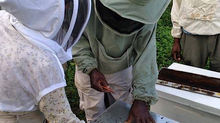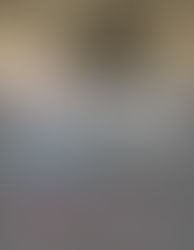Winter Prep Tips
- Laura Bee
- Oct 22, 2016
- 4 min read
Winter is coming!
Now is the time to take advantage of the last few warm days of Autumn to prepare your bees for winter.

Depending on where you are, winter can mean snow, rain, freezing temperatures and wind. Or where our bees are, all of the above! If winter lasts several months it can really tax a hive. Most of us keep our bees in thin walled hive and there are ways we can offer greater protection and support for a healthy overwintering.

As temperatures drop the bees will draw closer together and cluster. The bees cluster together to generate heat by shivering. This shivering will keep the center of the cluster warm enough that bees can continue to do many normal activities including eating, moving around and taking care of the last of the Autumn brood. This creates a sort or respiration and will cause water to raise to the inner lid of the hive. It is important to tilt the hive or create an absorbent inner layer to keep the water from dropping back on the brood and bees.
(thermo-imaging photo credit: https://itsallofyourbeeswax.wordpress.com/2016/01/04/thermal-imaging-bee-hives/)
The hive temperatures will vary depending on whether or not brood is present. Temperatures can fluctuate between 57 and 85*F. When brood begins to be built up again in spring, the bees will bring the temperature up to 93*.
As beekeepers we can do a few things that can help the bees conserve energy and protect them from tough weather.
Here are some tips:
WARM: If you keep the hive pointed to the South or Southeast your hive will have maximum sun exposure. Painting your hive dark colors, or better yet, stapling tar paper over your hive will give them a little passive solar heating boost.

REDUCE: Reduce the hive entrance to 1-3" or so to keep out mice and breezes. Take away any extra hive boxes that are not filled with bees or honey. The bees like it nice and cozy and keeping the hive stack small as needed will allow the bees to work less to heat it, therefore saving their energy and honey stores.
FOOD : Always leave plenty of honey for your bees to survive the winter without additional feeds. Different areas and different kinds of bees will require different amounts of honey. Your local beekeeping clubs will have a good idea how much regional bees will need and will be happy to share their experiences. In Southern Oregon our New World Carniolan mutts only need about 45#, but we usually leave a full deep of capped honey to make sure.
WIND: Make sure your bees are protected from winter winds. Putting them beside a fence, or tucked in a shrub bank or beside a berm can help.
INSULATE: If you live in a severely cold location, you may want to wrap your hive in a winter wrap to protect the bees from the chilling winds. We use tarpaper for an inexpensive and durable solution, the dark color absorbs solar heat.
CHECK ON YOUR BEES periodically through the winter. Checking weight of the hive will help you know if it may need an emergency winter feed. At the College of the Melissae Apiaries we may choose to feed first year splits or swarms, but we have capped honey stored in frames in the freezer just in case bees may need it. We bring it to room temperature and wait for a warm day to slip it in the hive. Mostly we make sure they are well stocked with honey before the snow flies! In worst case scenario, pouring a thick layer of drivert sugar or fondant on the inner lid is the best way to feed sugar. (Do not do syrup as the bees struggle to dehydrate it during cold wet months.)
DRIVERT SUGAR is available at Costco, from baking supply stores or beekeeping stores. (According to Ruhl Beekeeping Supply>>>) "This sugar can be fed directly to bees without mixing into a syrup. This means less work, less mess, and less moisture in the hive. It has a texture somewhere between powdered sugar and fine table sugar, but is much softer to the touch than table sugar. Unlike powdered sugar, it has no corn starch. This sugar is a favorite of bakers because 8% of it is inverted, giving it a moisture retaining ability, which bakers love. Note, Drivert sugar should not be used as a substitute for sugar syrup feeding, but is an excellent supplement at certain times of the year." (http://www.bee-outside.com/drivertsugar.aspx)
FONDANT is a type of bee candy. Please use organic ingredients and add flavorings or essential oils sparingly (or not at all.) Place on top of inner cover or directly on top bars so that bees can access it easily. Placing on paper that has been scored with a sharp knife gives the bees a place to begin chewing.
Here's a a video to help you make this.
Here's a recipe from Colonial Beekeepers
Utensils Needed
Heavy sauce pan with lid
Extra Pot
Stirring Spoon
Candy thermometer
Electric mixer
Disposable molds (foil lined paper plates work well)
Ingredients
8 cups sugar (4# bag)
2 cups water
½ teaspoon white vinegar
Procedure
1. Pour all ingredients into sauce pan and bring to boil stirring constantly
2. Cover and boil 5 minutes
3. Insert candy thermometer and boil until temperature reaches 234°
4. Remove from heat and cool to 200° (placing pot in sink of water will speed this up!)
5. Whip with electric mixer until mixture begins to turn white with air bubbles throughout (3-4 minutes on the timer)
6. Pour into molds and allow to cool undisturbed
7. Store in a dry location (freezer is a good place)




































Comments